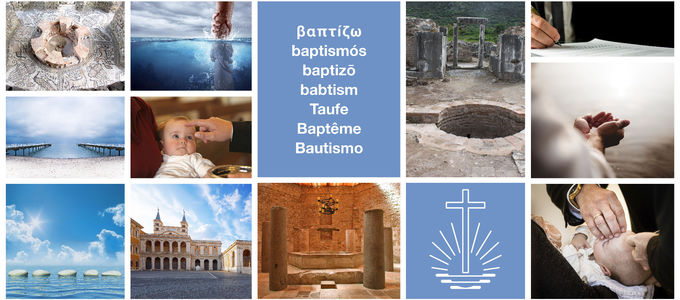
Baptism—such a simple act and yet so rich in significance and history. More than half of this series so far has revolved around this sacrament alone. It is time for a summary: here are eight key statements to remember.
Baptism comes from diving—at least in the Greek. The uniquely Christian creation baptisma (baptism) derives from baptismós (bath, washing). Rather than using the term baptō, however, the New Testament prefers the word baptizō in reference to the act of immersion in water, even though this has connotations of sinking or drowning. More on this: “The deadly word for baptism”.
The Bible acknowledges many meanings. The New Testament does not develop a self-contained doctrine of baptism, but it does provide many pieces to the puzzle. It portrays baptism as: shared destiny with Christ, redemption through renewal, the foundation for the gift of the Holy Spirit, admission into the fellowship of the baptised, and the beginning of the last things. More on this: “Baptism in its five dimensions”.
Changing circumstances brought about shifts in understanding. The question of what the sacrament concretely meant to people changed over the course of world history. And this had a great deal to do with general political conditions and social influences. More on this: “The durability and resistance of baptism”.
Scripture says very little about method. Although Jesus clearly instituted this sacrament, the ritual itself is not described anywhere in detail. In the context, however, it becomes clear: Christian baptism requires a dispensing agent, water, the Trinitarian formula, and a profession. More on this: “A fluid rite”.
It’s not the amount of water that counts. The various forms of baptism developed early. As of the year 200 AD, at the latest, there were at least three well-established variants: immersion (per immersionem), pouring over (per infusionem), and sprinkling (per aspersionem). More on this: “Somewhere between immersion and sprinkling”.
Child baptism is neither prescribed nor taboo. The Bible is also silent on this subject. And here too, the decisions were made in early Christendom. Whether one advocates or rejects child baptism depends upon how one fundamentally understands the sacrament. More on this: “Let the little children come to Me?”
Over time, the place changes. A spontaneous plunge into the river, a mass event in the baptistery, or an emergency act in the hospital—the question of where baptism should take place was subject to the most diverse of influences. More on this: “The travels of baptism”.
Reconciled diversity requires patience. Baptism is the believer’s incorporation into the one church of Christ. And nevertheless, the churches took a long time to arrive at a common denominator in terms of ritual, and acknowledge one another’s baptisms. More on this: “The road into the baptismal community” and “Commonalities and differences in black and white”.














